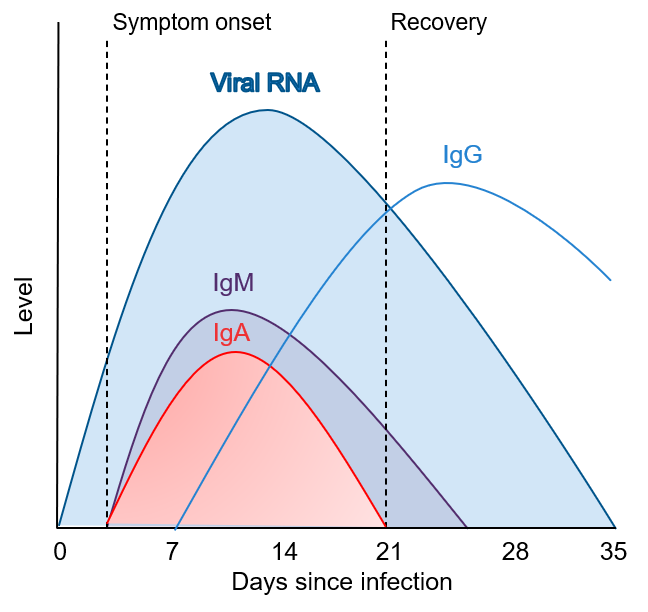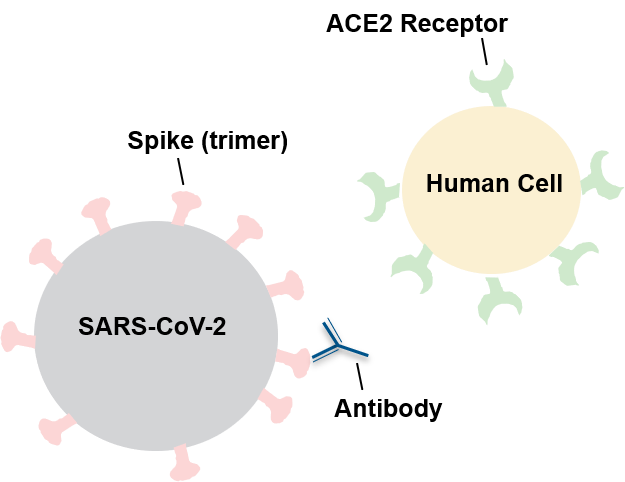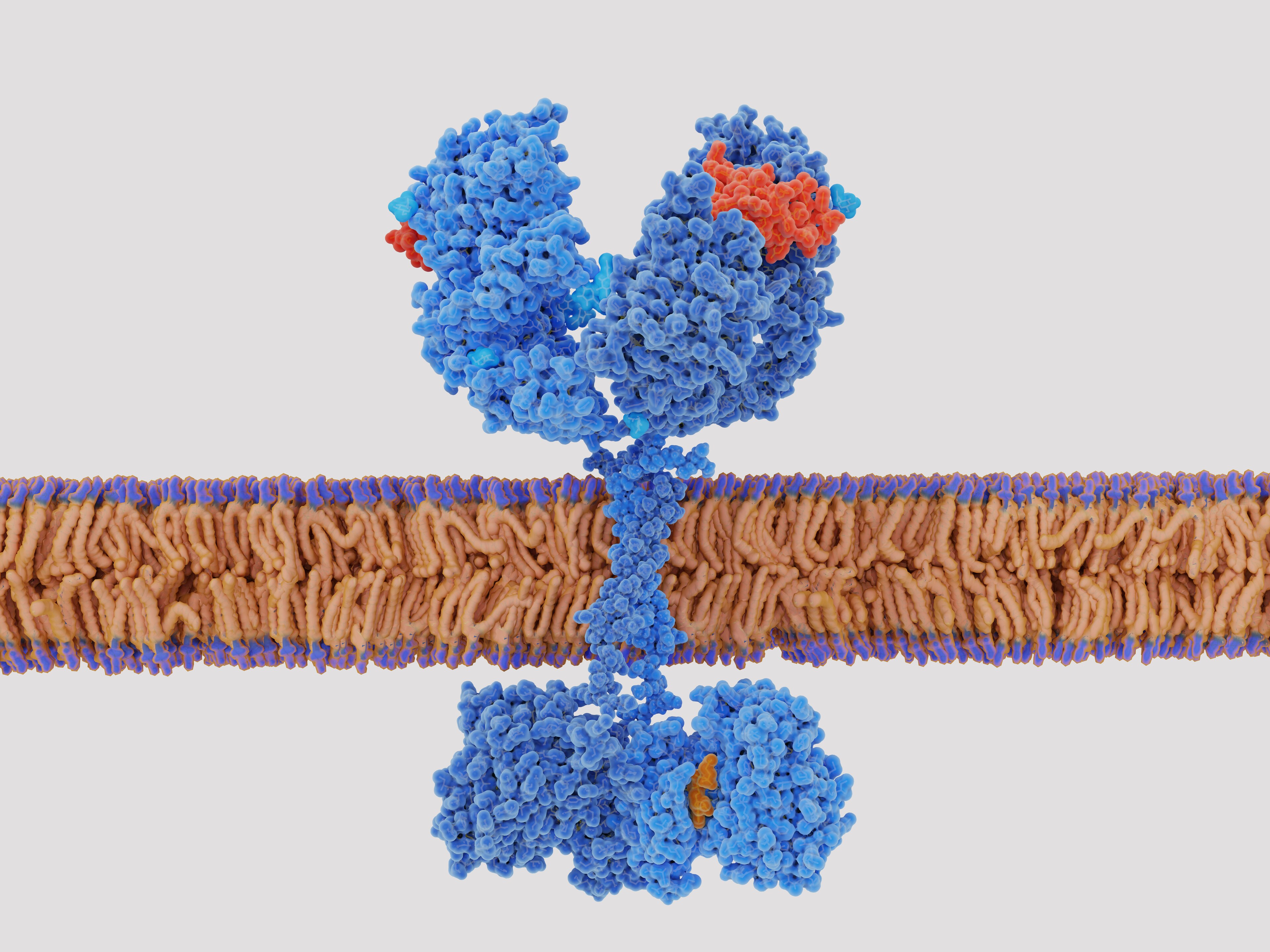
Multi-pronged approaches have been needed to address the recent SARS-CoV-2 crisis. To detect the virus itself, sensitive nucleic acid based tools using PCR amplification of nasal swab samples have been critical for early detection. However, there is still a need for tools to detect specific antibodies in blood samples to understand our immunity to SARS-CoV-2 whether it is through exposure or vaccine (1). Let’s start with the basics for serology assays.
What are serology tests and its importance in research?
Serology assays detect antibodies in serum, which is processed from blood samples. As a diagnostic tool, serology tests can be used to tell us if someone has been exposed to SARS-CoV-2 and the concentration of these specific antibodies in the blood. This can help to determine if someone can be a good donor of convalescent plasma, blood that can be used as a therapy, or may be able to return to work with sufficient immunity. For research purposes, understanding how the immune system responds to the virus during the course of infection, as well as to vaccines or treatments, will be important to overcoming the pandemic and preparing us for a better future.
How to determine which immunoglobulin antibodies to study?
During the course of infection, different types of immunoglobulins (IgA, IgM and IgG) are produced that bind specifically to various parts of the virus (2). At the acute stage, IgM antibodies are one of the first to be produced by the immune system and have a short window before being replaced by IgG antibodies, which are longer-lasting and most abundant. IgA antibodies provide early protection in the mucosa of organs such as the respiratory and gastrointestinal tracts and are also short-lived like IgM response.

How to determine which SARS-CoV2 proteins to use?
The specificity of the antibody to various parts of SARS-CoV-2 protein is important, and there are many antibody options that are now commercially available for use in research. As researchers start to uncover the complexity of specific antibodies that can bind and effectively block the virus from entering host cells, the focus has shifted to the SARS-CoV-2 structural proteins. These include the Nucleocapsid and Spike proteins which show varying degrees of homology to the other 6 strains of coronaviruses(3). For instance, the Nucleocapsid protein is 90% homologous between SARS-CoV-1 and SARS-CoV-2 but the Spike protein appears to have a much lower degree of homology making it more specific to SARS-CoV-2 antibody detection. In addition, there are multiple parts of the Spike protein to consider such as the Receptor Binding Domain (RBD) where the ACE2 Receptor is thought to bind, S1 vs S2 subunits, and the fact that the Spike protein trimerizes to form the crown-like appearance that is seen on the surface of the virus. Sample screening of serum from healthy and infected donors is the best method to determine specificity and sensitivity of an assay. Specificity is important to minimize false positives of an assay, or non-specific antibody binding to the protein, while sensitivity is important to minimize false negatives, or a correctly bound antibody not indicating a readout above the detection threshold. For serology assays, specificity is typically more critical to ensure that the right antibodies are being detected.

How can Thermo Fisher Scientific help with developing your own assay?
Once the type of immunoglobulin and the specific protein of interest for the assay you want to develop are identified, the rest is easy. The most common immunoassay method for a direct ELISA is to coat the viral protein of interest onto the bottom of a 96-well plate, and then allow the antibodies in the serum sample to bind. Once the plate is washed, all non-bound materials wash away, and only the antibody of interest is left. An immunoglobulin conjugated to horseradish peroxidase (HRP) can then be added to bind the protein-antibody complex. A substrate such as TMB chromogen is then needed for HRP to react with, followed by a stop solution to finish the reaction. The colorimetric readout of the reaction can be read on an instrument like an ELISA plate reader (4). Thermo Fisher Scientific provides you confidence to develop a successful assay by offering the best-in-class reagent components needed including plates, blocking buffers, chromogen and more.
Related products to develop your own ELISA:
Mouse anti-Human IgG Secondary antibody HRP
SARS-CoV-2 antibodies as controls
References:
1) A Coordinated Global Research Roadmap: 2019 Novel Coronavirus. March 2020, WHO and Global Research Collaboration for Infectious Disease Preparedness and Response (GLOPID-R)
2) Long, Q., Liu, B., Deng, H. et al. Antibody responses to SARS-CoV-2 in patients with COVID-19. Nat Med 26, 845–848 (2020).
3) Xu et al. Systematic comparison of two animal-to human transmitted human coronaviruses SARS-Cov-2 and SARS-Cov. Viruses 2020
4) Zhao R, Li M, Song H, et al. Early detection of SARS-CoV-2 antibodies in COVID-19 patients as a serologic marker of infection Clin Infect Dis. May 1, 2020
—
For Research Use Only. Not for use in diagnostic procedures.





Leave a Reply